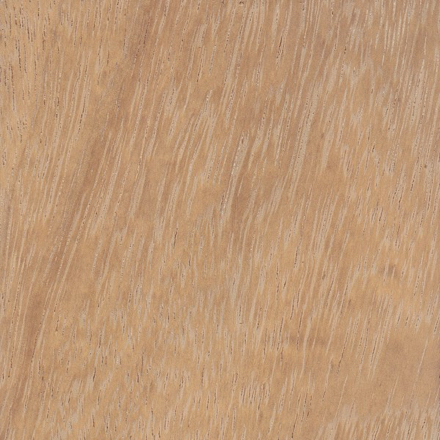Unlike the majority of Iroko available on the market, Thorogood’s Iroko is stored in purpose built sheds, ensuring that its moisture content stays low prior to machining. Our Iroko also tends to be milder, making machining and milling an easier proposition.
Description
Immensely strong and naturally durable, Iroko is fast becoming a popular alternative to teak for use in external joinery and boatbuilding. Its heartwood is naturally golden to medium brown, but darkens considerably over time with exposure to UV light, eventually mellowing to a uniform deep brown. The timber’s strength comes from its high density and interlocked grain and the wood can sometimes present white calcareous deposits if the tree has been damaged. Despite this, Iroko tends to work well and finish well.
Working Properties
Iroko works well, but its coarse texture and interlocked grain can dull tools. A cutting angle of 15 should help overcome this but extra care should be taken not to damage tools or machinery on any calcareous deposits that may be present in the timber. The interlocking straight grain planes and moulds well but can be susceptible to tearout during surfacing. Overall Iroko dries, finishes, and fixes satisfactorily.
Physical Properties
Iroko dries quickly and well, and is mostly resistant to distortion and splitting. Its interlocked grain makes it extremely strong and stable once dried, and the wood demonstrates an excellent strength-to-weight capacity that makes it ideal for construction purposes and ship building. Woodworkers should avoid applying shock loads across the grain as this can cause Iroko timber to become brittle and susceptible to splitting.
Durability
Iroko is one of the most durable timbers available on the market. It is naturally resistant both to decay and insect attack and is extremely hard-wearing. The timber is unlikely to split and warp over time, even under atmospheric change, so is perfectly suited to external or wet environments.
